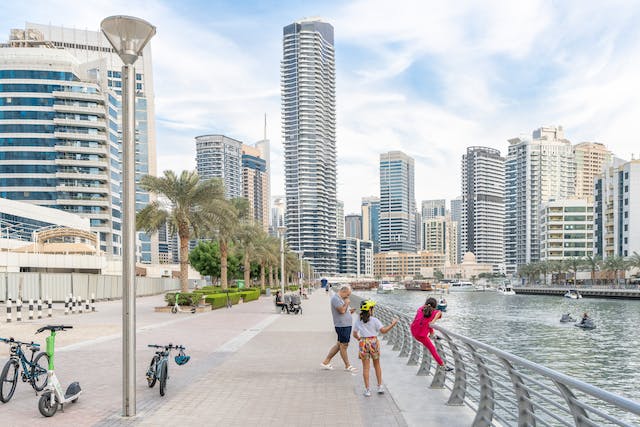Over the past few decades, Dubai has emerged as a symbol of unprecedented growth and modernity, transforming from a modest trading outpost to a global economic powerhouse. Nestled on the southeast coast of the Arabian Peninsula, this once-sleepy desert town has undergone a remarkable metamorphosis, fueled by visionary leadership and ambitious urban planning.

The Sheikh Zayed Road
Sheikh Zayed Road, the longest highway in the Emirates connecting Dubai and Abu Dhabi, underwent construction starting in 1971, requiring over nine years to reach completion. Originally named Defence Road during its early development, this extensive roadway is currently surrounded by significant landmarks and districts in Dubai, and is easily accessed from places such as the Oaks Ibn Battuta Gate Dubai.
The Dubai Marina
Distinguished by iconic landmarks such as the Jumeirah Beach Residence and Masjid Al Rahim mosque, Dubai Marina asserts itself as the world’s largest man-made marina, playing a significant role in shaping the history of Dubai. The construction involved channeling water from the Gulf to the designated area, forming a man-made waterfront.
The Dubai Waterfront
Comprising a combination of canals and an artificial archipelago, the construction of this 8-kilometer-long waterfront, running parallel to the Persian coastline, commenced in February 2007. However, it faced an interruption midway due to the financial crisis that affected Dubai at that time – now hosting some fine examples of a luxury hotel in Dubai.
The Dubai Airport
Constructed in 1959 under the directive of the then-ruler Sheikh Rashid bin Saeed al Maktoum, Dubai Airport initially featured a modest 1,800-meter runway made of compacted sand. Subsequent developments in the history of Dubai saw the addition of an asphalt runway and a fire station to the airport’s facilities. Presently, the airport stands as one of the world’s busiest.








